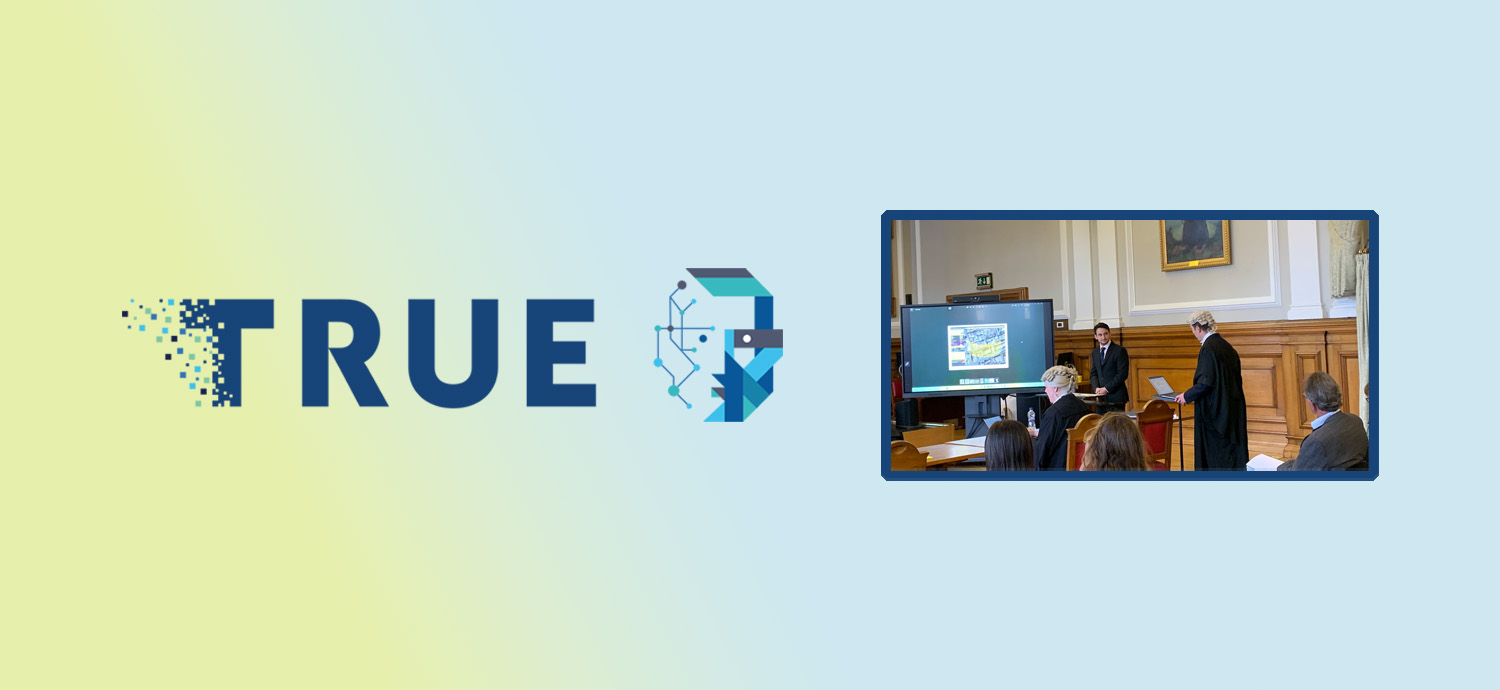
The School of Law’s UKRI-funded TRUE project held a mock trial exercise on Saturday 23 September at the historic Council Chamber of Goldsmith’s University of London.
This fictional trial was designed to test jurors’ trust in user-generated evidence. The day’s trial proceedings were recorded by a team led by award-winning documentary maker James Newton, and the recording will be shown to research participants recruited to act as mock jurors, whose deliberations will be analysed.
Sir Howard Morrison KC, an experienced judge who has served as a Judge of the International Criminal Court, and was appointed Independent Adviser to the Ukrainian Prosecutor General by the UK government in 2022, was the judge for the mock trial. The prosecution was represented by Helen Malcolm KC and Joshua Kern, and the defence by Peter Haynes KC and Kirsty Sutherland. Nick Waters, an open source analyst with Bellingcat, was cross-examined as an expert witness.
The mock trial follows from a mock admissibility hearing organised by the OSR4Rights project at Swansea University, GLAN and Bellingcat in 2021. Her Honour Judge Joanna Korner’s decision on the admissibility of a piece of open source evidence in that case is available online.
The fictional defendant was a pilot with the Saudi Royal Air Force and charged with one count under section 51 of the International Criminal Courts Act 2001: the war crime of intentionally directing attacks against the civilian population as such or against individual civilians not taking direct part in hostilities.
The prosecution case was that on 7 May 2018, the defendant flew his fighter jet above Tahrir Street, on which is located the Office of the Presidency, and launched two air-delivered bombs. The prosecution argued that the attack was typical of a ‘double-tap’ strike, a controversial tactic in which a war plane attacks a site and returns to attack the same area again, as people are carrying out rescue work.
The defence case was that the defendant was responsible for a single strike, conducted shortly after 7am when no civilians were present, at a different location which was not a civilian location, namely the Presidential Palace outside the centre of Sana’a. Two high-level Houthi leaders were present at the Presidential Palace, and no damage was done to any surrounding property and that no civilians were harmed.
A video posted to Twitter and verified using open-source analysis by Bellingcat, a non-profit organisation that specialises in online investigations, was central to the prosecution’s case. It purportedly captured the second airstrike taking place while rescuers were trying to extract an injured person from rubble. The defence challenged the extent to which a jury can rely on a piece of content posted online, where identity of the person who captured the content is uncertain, and as such cannot be called to give evidence.
Speaking after the mock trial exercise, Professor Yvonne McDermott Rees said:
“This mock trial is a central component of the TRUE project, and it will be fascinating to see how jurors assess and weigh user-generated evidence in a realistic scenario. We are so grateful to the eminent lawyers, judge, and experts who generously gave their time to take part in the trial, which was a resounding success.”
